The Star-Spangled Banner.
The national anthem of the United States is extremely familiar the world over, but the history of the song is less well-known. I was born in and grew up in the UK and so never learned about this part of United States history, despite the British being involved.
While spending 9 days in Baltimore on our 50 state road trip, Shae and I visited the Star-Spangled Banner Flag House where we learned all about its history.

Next to the Star-Spangled Banner House is a visitor center. When visiting, take a look to the left as there’s an interesting map of the US created out of stone from each state.
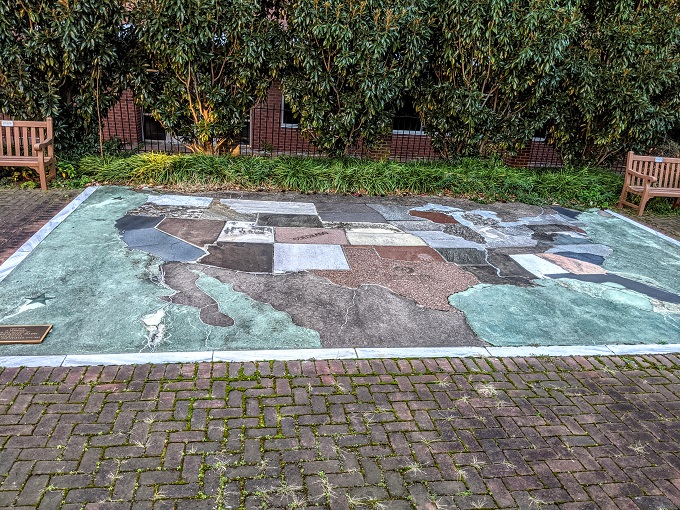
Shae and I visited in December 2020, so during COVID. As a result, there were several pandemic-related precautions set up. All visitors had to wear a mask and there were limits of 10 people in the visitor center (Hofmeister Building) and 5 people in the Flag House.
There were also limited admission times, so we booked our tickets online for 2:30pm that afternoon.
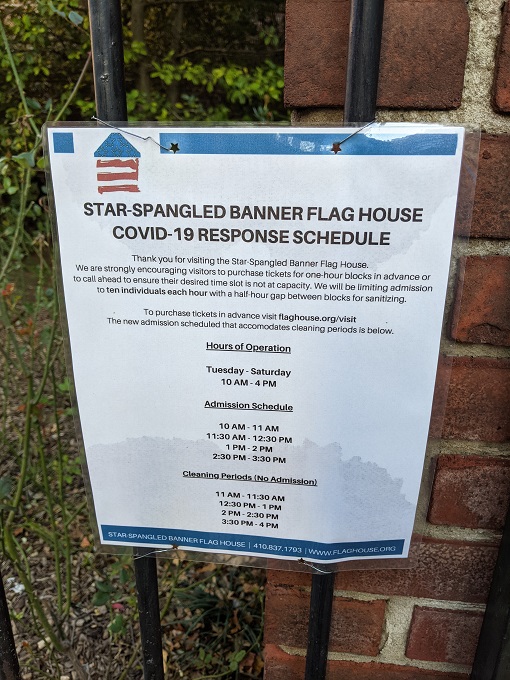
You start off by going in the visitor center which is the large building behind the Star-Spangled Banner Flag House. The experience starts with a short video about the flag’s history.
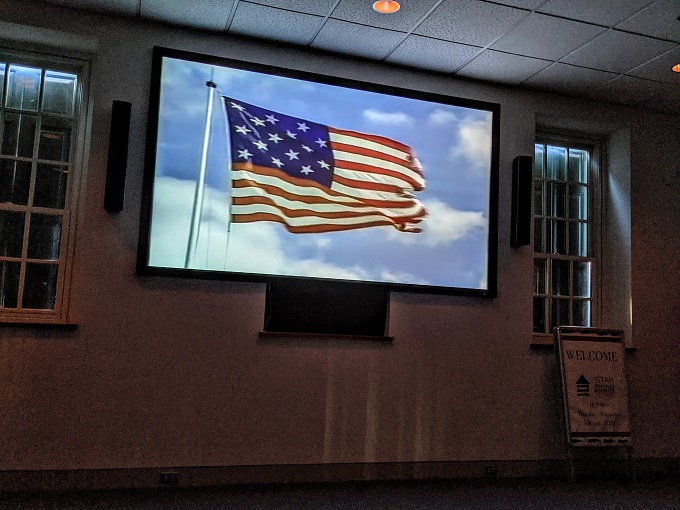
There are then exhibits in the visitor center to check out before moving on to the Flag House itself. The Flag House has a lot to see and learn, so there’s an audio tour which accompanies your visit.
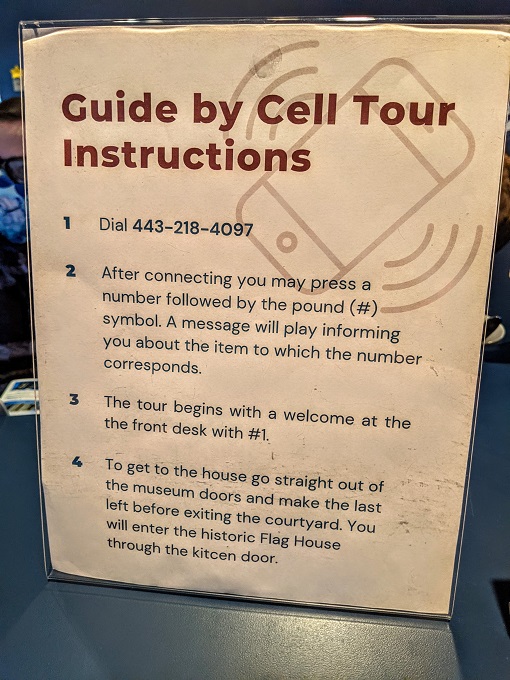
Much of what was on display is information I didn’t know, so here are 11 things I learned at the Star-Spangled Banner Flag House in Baltimore.
1) The Star-Spangled Banner Was Inspired By The Battle Of Baltimore
I’ve heard the lyrics of the Star-Spangled Banner many times and so knew that it referred to a battle, but I didn’t know which one. It turns out that Francis Scott Key’s poem was inspired by the Battle of Baltimore which took place at Fort McHenry.

The Battle of Baltimore was part of the War of 1812, although it took place in 1814 as a peace treaty wasn’t ratified until 1815. Francis Scott Key was on a ship watching the bombardment of Fort McHenry by British ships when he saw the storm flag flying above the fort.
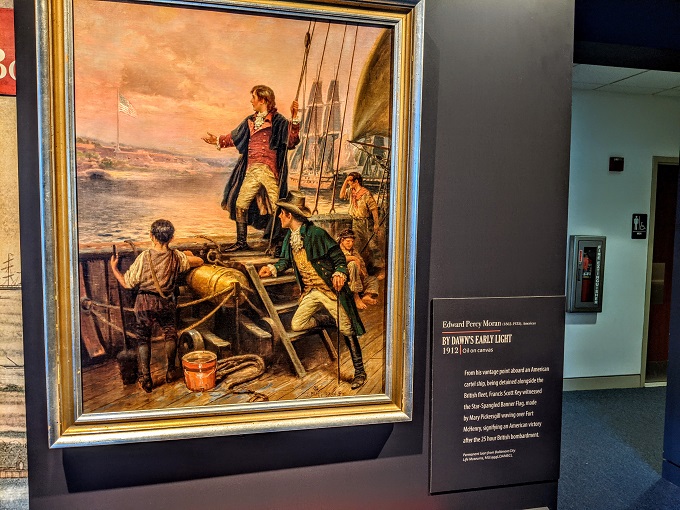
Fort McHenry withstood the attack, replacing the storm flag with a larger US flag. Seeing the flag flying above the fort inspired Key to write his Star-Spangled Banner poem.
2) Mary Young Pickersgill Made The Flag
Mary Young Pickersgill inherited her flag-making business from her mother – Rebecca Flower Young. Her mother had been a successful flag maker in Philadelphia during the American Revolution, with Mary subsequently moving to Baltimore in 1807.
Mary was commissioned to make the flag in 1813 and was paid $405.90. She was also commissioned to make the smaller storm flag, for which she was paid $168.54.
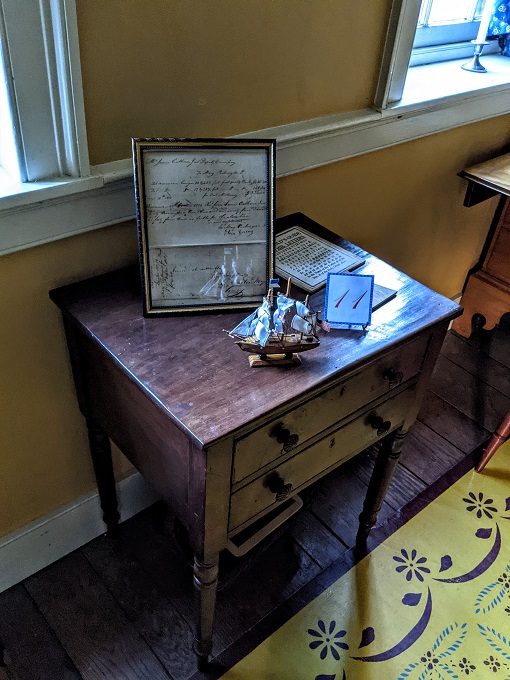
That total of $574.44 comes to about $9,000 in today’s money. It took six weeks to make the flag, which makes it seem like it would’ve been a profitable endeavor seeing as soldiers lived on ~$2 per week. However, that money had to cover the cost of the materials, as well as labor because its size meant that Mary wouldn’t have been able to make it alone. Those factors mean it’s now thought that she might have made a loss on the project.
3) Mary Young Pickersgill Had Help Making The Flag
As mentioned above, Mary would likely have had labor costs as she had to enlist help in completing the flag. It’s thought that included her mother and daughter, along with others including Grace Wisher, although Grace wouldn’t have been paid.
Grace was a free African American, although as a child she was Mary’s indentured servant. Mary agreed to pay Grace’s mother $12; in return, she’d provide Grace with shelter, food, clothing and the skills of sewing and housework for six years. Sadly unsurprisingly, Grace’s contribution wasn’t memorialized in the painting below.
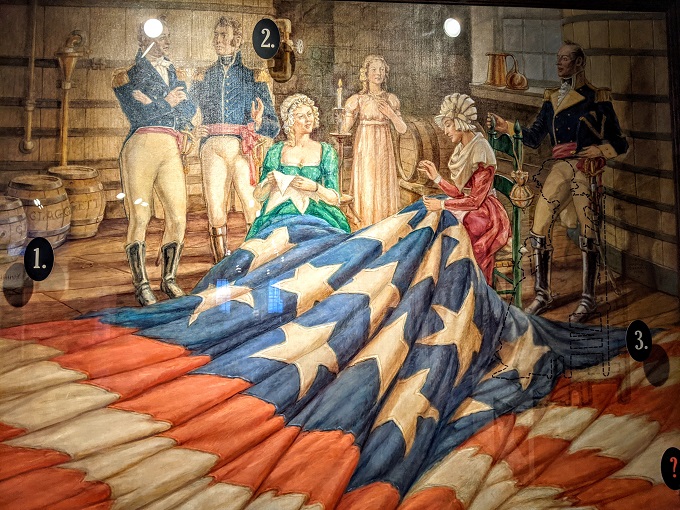
4) The Star-Spangled Banner Was Huge!
Mary was commissioned to make two flags. The larger garrison flag was to be 30 feet by 42 feet, while the (somewhat) smaller storm flag was to be 17 feet by 25 feet. Due to its size, she had to finish the flag at Brown’s Brewery down the road as her house was too small.
It can be hard to picture how large that is. Thankfully there’s a flag on the side of the visitor center which is the same size as the larger flag. To help provide even more context as to how large that is, that’s Shae standing at the bottom.

5) The Stars & Stripes Were Large
As might be expected with the flag being so large, the stars and stripes on the flag were also large. Each stripe was two feet wide, as were the stars. Once again, here’s Shae for scale.
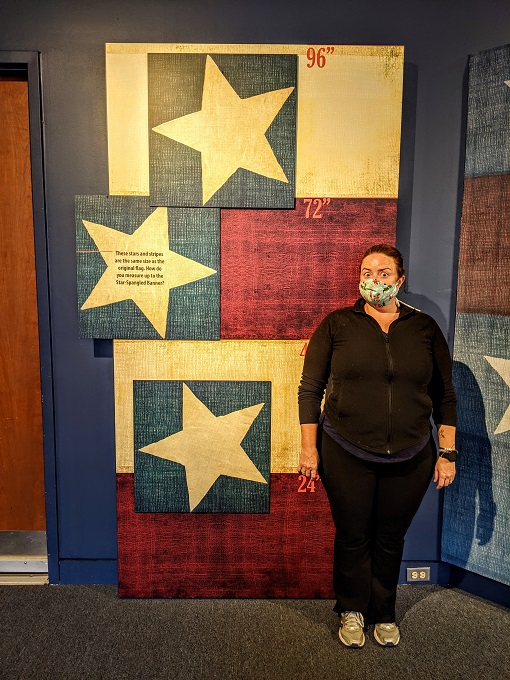
6) The Star-Spangled Banner Was Heavy
I’m not actually sure how heavy the original flag was. However, the Baltimore Weaver’s Society sewed a reproduction flag for the 1964 World’s Fair in New York. They used thicker wool than Mary used and took a year to make it; remember, it only took Mary and her assistants six weeks. The resulting flag was so heavy that it would have bent the flag pole and can now be seen inside the Flag House.
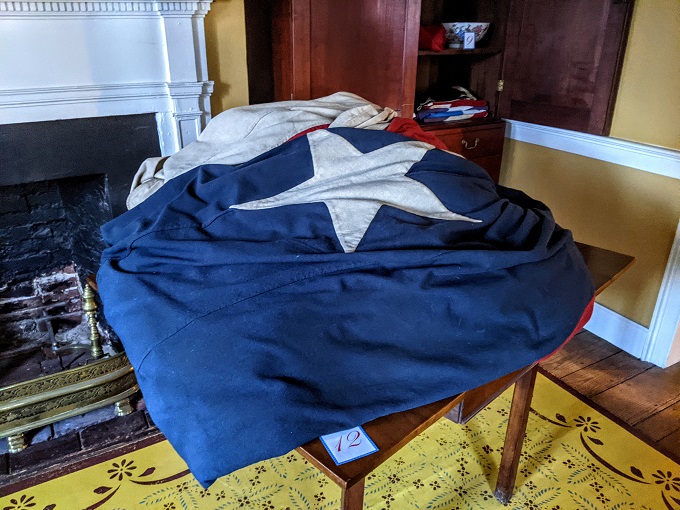
Thankfully Mary used English wool bunting which was lighter. That enabled the flags to fly above Fort McHenry during and after the Battle of Baltimore.
7) It Was Sewn By Hand
Mary Young Pickersgill didn’t have a sewing machine, so the entire 30 x 42′ flag was crafted by hand, hence why she needed assistance.
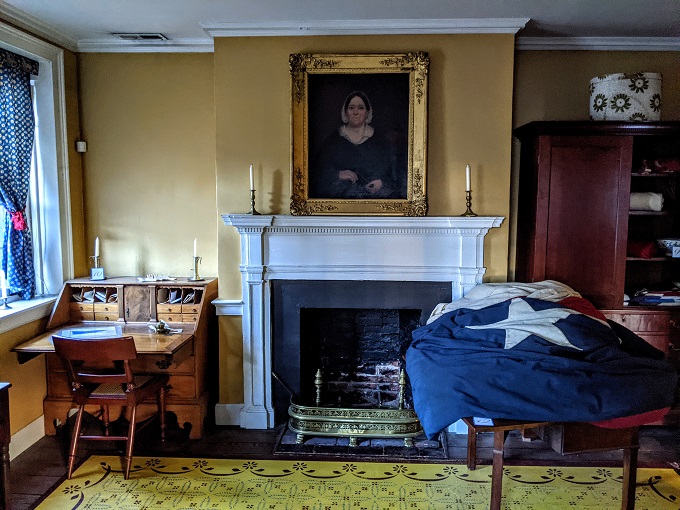
8) Parts Of The Star-Spangled Banner Were Given Away
Back in the day, flags didn’t hold as much importance to people as they do today. As a result, parts of the original Star-Spangled Banner were given away as gifts and souvenirs. The Flag House visitor center has a small portion of it, with the now-shortened flag on exhibit at the Smithsonian National Museum of American History in Washington D.C.
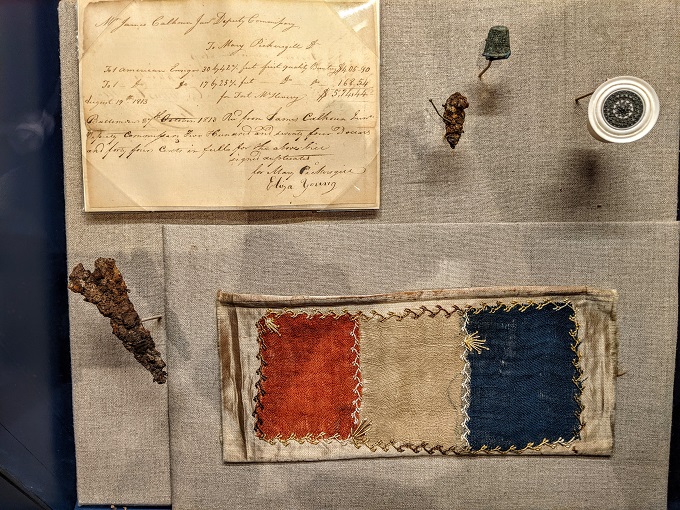
9) The Star-Spangled Banner Didn’t Become The National Anthem Until 1931
Even though the Star-Spangled Banner was written by Francis Scott Key on September 14, 1814, it would take more than a century for it to be adopted as the national anthem of the United States.
The Star-Spangled Banner was originally a poem, before being set to the tune of ‘To Anacreon In Heaven’. It was performed in this way many times in subsequent years, before a bill was introduced in 1912 seeking to make it the national anthem. Although it was submitted to Congress, it died in committee.
It wasn’t until almost 20 years later that both houses of Congress adopted a bill making it the national anthem, with it being signed into law on March 3, 1931.
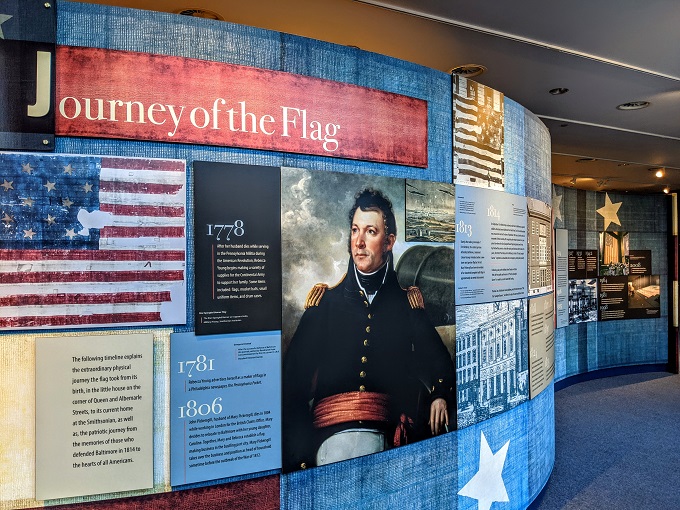
10) Floor Mats Were Made Of Sails
In addition to learning about the Star-Spangled Banner and the Battle of Baltimore, we also learned more about what life was like back in the early 1800s while walking around the Flag House.
For example, rugs were expensive and so floor mats were used in some homes as an alternative. These were made of canvas; in the port city of Baltimore, that meant the floor mats were often created from old ship sails as those were made of canvas too.

11) Fire Was Used In Different Ways
In the days before electricity, fire was used in a number of different ways in the home. That increased the danger that the house would catch on fire, particularly in the kitchen.
All rooms in the Flag House had wooden floors, with the exception of the kitchen. The kitchen’s brick floor helped ensure that if there was a fire, it wouldn’t spread so easily to the rest of the house. The non-flammable floor meant they could even place hot coals on the floor and put a pan on top to increase what could be cooked or heated up.

The fireplace in the kitchen had a beehive oven at the back of the hearth so that they could bake bread.
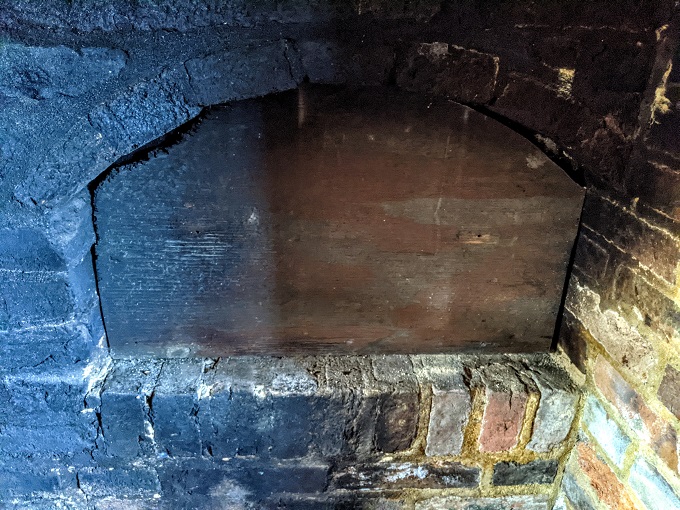
To turn that bread into toast, they used a kick toaster. Slices of bread were placed in the kick toaster which in turn was placed in front of the fire. Needless to say, the metal toaster would get hot, so it would be kicked to turn the bread so the other side could be toasted, hence it being a ‘kick’ toaster.
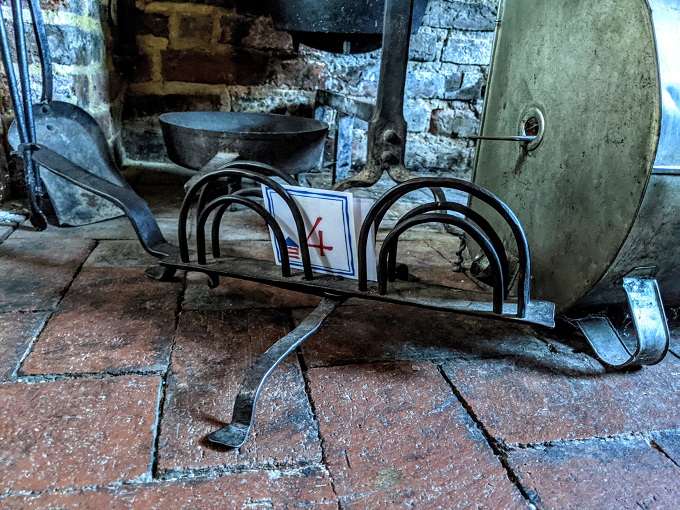
The house also had an early version of a radiator. During the day, pieces of cast iron were placed in front of fireplaces to absorb their heat. When the fires were put out at night time, the cast iron would continue emitting heat, thereby helping keep the house warm until the fires were restarted the next day.
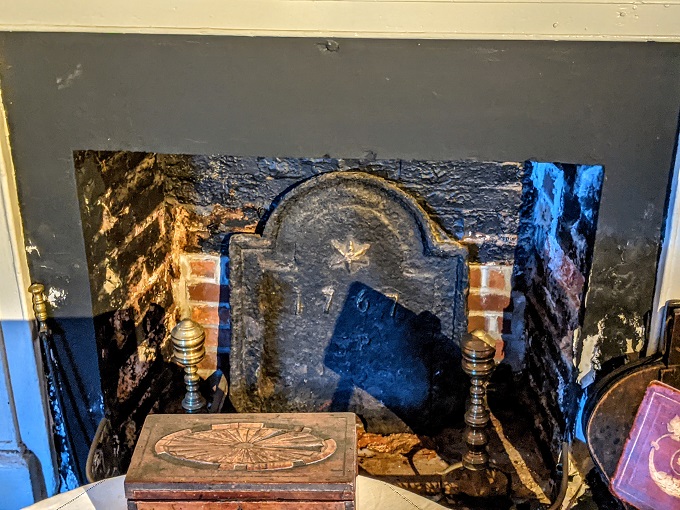
Final Thoughts
The Star-Spangled Banner Flag House in Baltimore is a far more interesting attraction than I anticipated. We learned a lot about the Star-Spangled Banner – both the garrison flag that flew over Fort McHenry and the resulting poem written by Francis Scott Key.
If you visit Baltimore, we’d recommend spending a couple of hours visiting the Flag House and visitor center.
Ticket Prices
The Star-Spangled Banner Flag House has two types of ticket packages. One includes entry to the Flag House and the other doesn’t. When we visited in December 2020, these were the ticket prices for the two packages:
Film, museum and audio tour of the Flag House:
- Adults – $9
- Senior/military – $8
- Student – $7
- Children (under 6) – Free
Film and museum only:
- Adults – $6
- Senior/military – $5
- Student – $4
- Children (under 6) – Free
Address
Star-Spangled Banner Flag House, 844 E Pratt St, Baltimore, MD 21202
[…] You can take an audio tour of the Flag House, with the visitor center next door providing even more history and context of its history. We learned a lot during our visit, so find out more about it here. […]